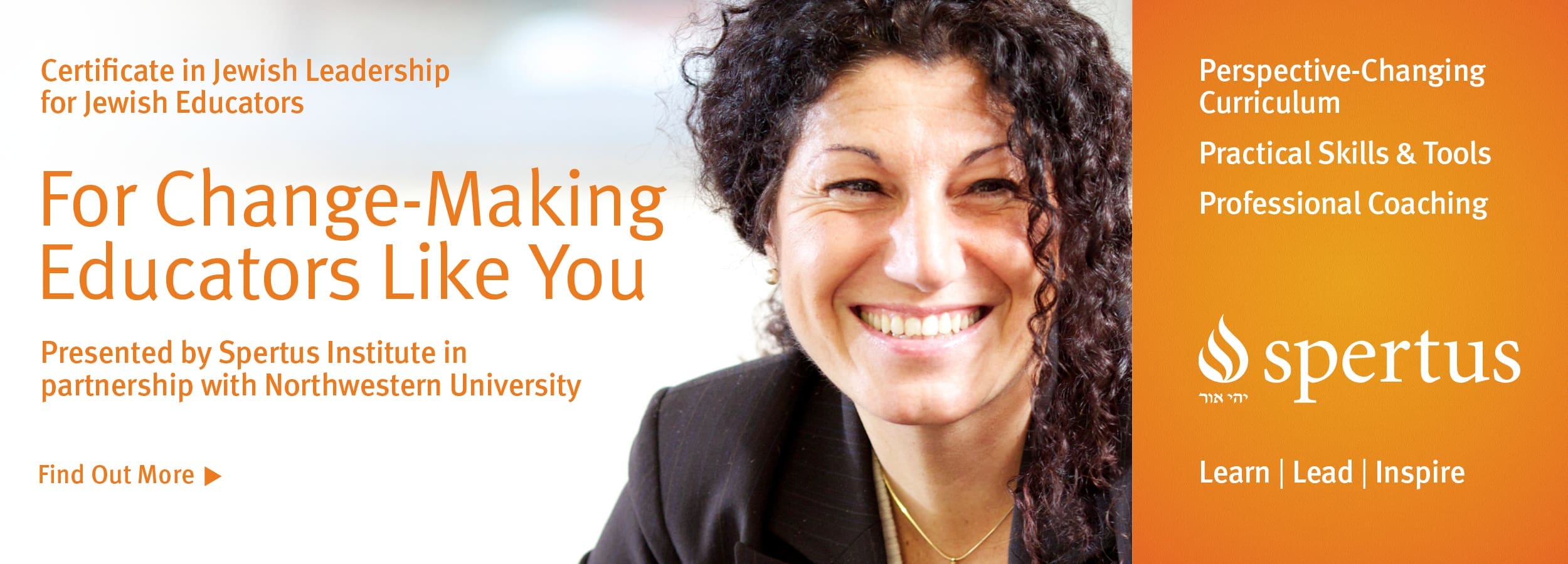The rise of antisemitism challenges educators to respond creatively and provide our students with the tools necessary to prevent them from being influenced or hurt by the distorted narratives often constructed. I would like to suggest that familiarizing our students with the historical method and teaching them how to think historically will help them significantly in this effort.
Historians are trained skeptics. As part of their quest to understand the past they must constantly question evidence. Their default cognitive position when viewing evidence is, “questionable until proven true or false (or at least likely or unlikely).” Collecting the evidence is only the first step. They hold evidence in abeyance contingent upon further investigation. Following collection, the evidence must be confirmed, weighed, and analyzed.
The key tools historians use are primary and secondary sources. Primary sources are produced by live witnesses to the event being studied, such as letters, diary entries, speeches, oral histories, and even photographs. Secondary sources are written by people after the event and present analyses based on the primary sources.
When evaluating sources, historians are guided by a series of questions. What is the source and provenance of the evidence? Is the source both authentic and reliable (meaning is the source legitimate and, if for example, it is a person’s diary entry, is the information accurate)? Is it contemporary to the event it is describing or commenting on, or is it from a different time and place? If it is not contemporary, why was it produced when it was? Can we detect cognitive biases or ideological agendas? Do other sources support or argue with it, and if so, what are their relative strengths and weaknesses? On what points do contradictory sources argue and on what points do they agree? Ultimately, how does this evidence help us understand the event? Only when these questions are answered in a way that assigns value to the evidence, are historians prepared to use it to further our understanding of the historical event being studied.
In fact, this approach is used in many walks of life. For example, national security intelligence agencies adopt this approach when evaluating their sources of information. They evaluate their sources of information based on the reliability and credibility scale. In this matrix, reliability refers to the “source” and credibility to the level of confidence in the information conveyed. Many intelligence failures have occurred when these questions were not properly asked and information was either believed or disbelieved for reasons such as the influence of cognitive biases like confirmation bias. Examples range from Gedaliah not believing that there was a plot to assassinate him to the United States defense establishment believing that Saddam Hussein had weapons of mass destruction. Even Israel’s vaunted military intelligence community fell victim to this in the days prior to the 1973 Yom Kippur War. Major General Eli Zeira, who commanded Israel’s military intelligence branch, explained away what turned out to be very clear signs of the impending attack because they did not fit into “the Concept” which was guiding Israeli military strategic thinking at the time.
The idea that we should be skeptical can be seen very clearly in rabbinic literature. For example, the fifth chapter of Sanhedrin discusses the many questions the bet din asked witnesses to ascertain if they were telling the truth. Likewise, even in cases where the witnesses thought they were being honest, the rabbis wanted to ensure that they actually and accurately witnessed what they thought they did. The Sages understood that not only do mistakes happen, but that sometimes, for whatever reasons, people will rationalize outright lying. We can extrapolate from this example that even in non-judicial situations it is wise to question and investigate. As the aphorism declares, “if it sounds too good to be true, it probably is.”
Through the use of case studies and samples of evidence related to these studies we can train students to be skeptical of everything they read. Students can be shown the famous painting of George Washington crossing the Delaware by Emanuel Leutze. While this painting is iconic and captures the courage of Washington and his army that fateful night, it is full of historical errors. Simply asking students to try to identify some of these errors will demonstrate to them that sources need to be judged. On their own, they will likely realize that the Delaware River does not look like the river in the painting (it is actually based on the Rhine River) and that given the weather that night, Washington would not have been able to stand up the way depicted in the painting without falling. It will be essential for them to reveal that Leutze painted this painting nearly seventy-five years after the crossing. The point is that by using this familiar painting students will realize that not everything is as it appears and that they should test their sources.
After studying and evaluating a selection of evidentiary sources like this painting, students will understand the importance of approaching evidence skeptically and familiarize themselves with the questions to ask when evaluating a source. Students can then be taught how to apply these skills to judging social media. When it comes to social media posts (and for that matter print and television news media as well) students can be taught to research the sites and determine if their positions on current events are always the same. They should assess what sources the site relies on and whether these sources are reliable. If you can safely predict what a particular outlet is going to opine on a topic before you read it, it is safe to say it is agenda driven. And while this doesn’t automatically mean it is misrepresenting the truth or does not make valid points, it does indicate the need to question its sources and investigate further.
A social media checklist could be helpful as it will equip students with a list of basic questions they should ask about everything they read before accepting the conclusion presented. A possible checklist can consist of the following:
- Source Identification: Is it a .edu, .org, .com, etc.
- Author’s Background: Is the author’s name clearly indicated? Does the author have professional expertise and experience in the field he/she is commenting on? Does the author have a good reputation with respect to fact checking?
- Date Check: Is the publication date clearly indicated? Is it recent enough to be relevant? Has the post been edited, and if so, when and why?
- Content Analysis: Is the article well written and edited for errors both grammatical and logical? Is the main purpose of the article to inform or to persuade? Does the article present in a respectful and credible manner opposing viewpoints?
- Cross-checking: Is the source original or reposted? Are there similar sources posted and are they each original or repostings as well? Does the article present supporting evidence?
Most, if not all, antisemitic posts will not meet this checklist’s criteria. Equipped with this checklist and familiar with the historical method, students will become more critical consumers of social media in general and of antisemitic posts in particular. They will be better prepared to address the challenges they confront and take advantage of the opportunities they encounter as they become adult citizens in our globalized world.

David Hertzberg, Rabbi and Doctor, is Principal of Yeshivah of Flatbush Middle School (Brooklyn, NY) and Assistant Professor of History at Touro College.
Reach 10,000 Jewish educational professionals. Advertise in the upcoming issue of Jewish Educational Leadership.





